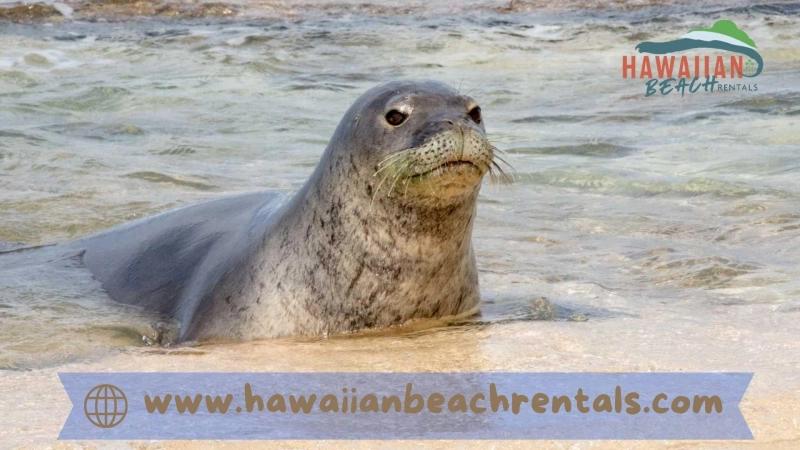In Hawaii, the Hawaiian Monk seal has special meaning. It is one of the two native species that can only be found in Hawaii, the other being the Hoary bat, to start. Officially named as "Monachus schauinslandi," the Seal is also referred to as "ilio holo i ka uaua" in Hawaiian, which means "the dog that goes in rough water." Because of these unique qualities, seals are highly regarded and cherished in Hawaii, to the extent that numerous volunteer groups stand ready to track and safeguard them whenever they come ashore. The Northwestern Hawaiian Islands, designated as the Papahanaumokuakea Marine National Monument by the federal government, are home to the greatest concentrations of monk seals.Another reason to avoid Hawaiian monk seals is their weight, which ranges from 375 to 500 pounds and is dark grey or brown. Usually, you can find them by alone, either swimming in the ocean or laying on the beach.
Preserving the Monk Seal of Hawaii
With only 1,200 of this species left, the Monk Seal is critically endangered and Hawaii is committed to protecting it. This commitment is based on the fact that the species was on the verge of extinction in 2016. There have only been reports of 1,570 monk seals throughout the Hawaiian Islands as of 2023. There are a number of reasons for the dramatic decrease in the seal population, including overfishing and the effects of parasites. The seals are also vulnerable to losses due to shark predation and have sluggish rates of reproduction.
Cooperative projects with NOAA Fisheries, National Marine Fisheries, the Hawaiian Islands Humpback Whale National Marine Sanctuary, the state Aquatics Resources Division, and volunteer research groups like the Hawaii Wildlife Fund continue efforts to track the seal population around the main islands. In order to better understand and protect this endangered seal species, NOAA has been actively monitoring monk seal populations throughout the Hawaiian Archipelago for more than 20 years. You may track these unique critters here at the Integrated Ocean Observing System if you're interested in seeing their movements.
The number of monk seals has increased due to conservation initiatives. Whether they are in the water or on the beach, the National Marine Fisheries Service advises us to maintain a minimum distance of 150 feet between us and Hawaiian monk seals in order to preserve their species and ensure your own safety. They frequently travel to the beach to spend a lot of time resting. Don't feed them or touch them, and don't interfere with their sleep. However, remember to snap as many photos as you like! Because Hawaiian monk seals are so uncommon, once one is spotted, volunteers usually patrol the area and post signs warning people to keep away.
The National Oceanic and Atmospheric Administration (NOAA) has launched a study that looks at the potential impact on the Hawaiian Islands' general population of social media users who take pictures with these adorable creatures. The study looked at almost 2,400 Instagram posts that included the hashtag #monkseal. The prevalence of portable electronics like cellphones with high-resolution cameras, according to the study, can give researchers researching endangered animals like the Hawaiian monk seal important information.
Photos uploaded within a year were examined by the NOAA. They collected behavioural issues, biological and location data (thanks to GPS meta-data), public perceptions of the rare Hawaiian species, and human disturbance. According to the study's findings, social media can play a significant role in global efforts to conserve and safeguard uncommon or endangered species.
The study has encouraging news: social media can support scientific research and population protection efforts for species like the Hawaiian monk seal. But some of the information has raised questions over close encounters with monk seals, which can also have unfavourable consequences.
For instance, of the approximately 2,400 posts examined, 22% had individuals within three metres of a monk seal. That is a lot closer than the 50 metres that the NOAA and other organisations who track the species advise. In 17% of the photos, the animal appeared to be disturbed. This means that there is a greater chance of upsetting animals that are merely attempting to unwind on the beach, especially in conjunction with the rise in tourists visiting Hawaii and the widespread practise of "selfie" taking. A monk seal that is disturbed may return to the ocean unprepared, having not had enough time to rest or acclimatise.
Hawaiian monk seals and Hawaiian green sea turtles can be seen at the Waikiki Aquarium if you are unable to observe them in the wild. The zoo is well worth the journey only to view these two unusual creatures.
Advice for coming across a Hawaiian monk seal
How You Can Assist


